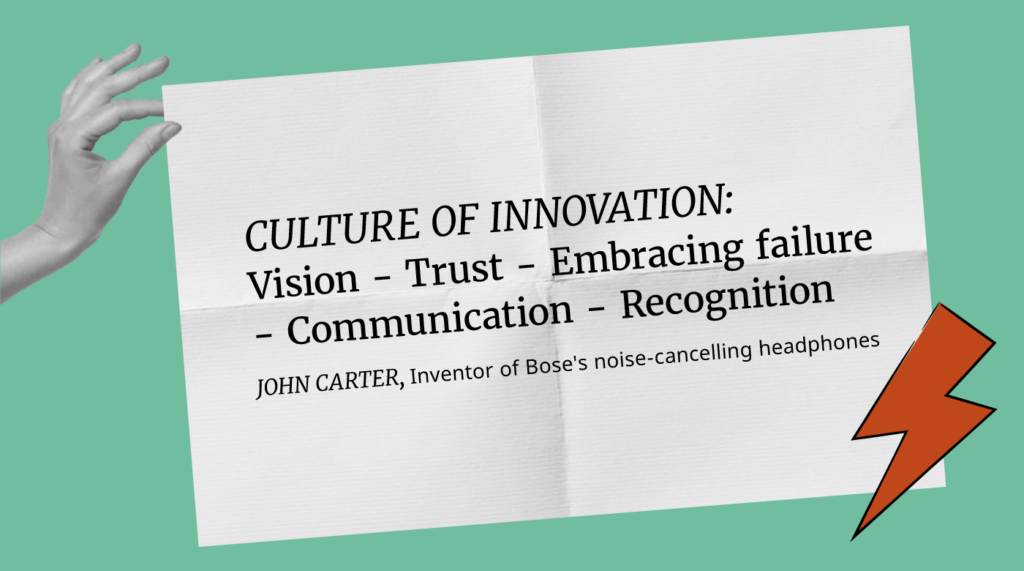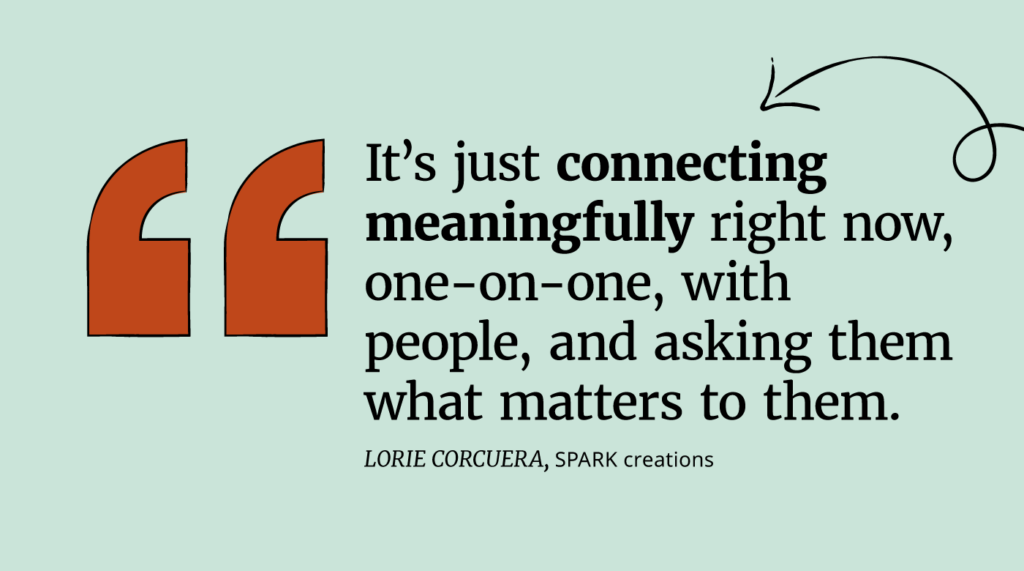Let’s talk about company culture. It’s a frequently heard term, but do you know how to define it? Why is it important? Moreover, how do you go about creating a culture you want?
In this article, I’ll talk about:
- What is company culture, why does it matter?
- What does a healthy company culture look like?
- How do you analyze your own company’s culture?
- Strategies to improve your company’s culture
What Is Company Culture, Why Does It Matter?
Culture is the social order of an organization, the ideas, customs, and social behaviors of the office that guide team members on what’s expected and accepted. Culture is created within the group, and everyone plays a part. From the CEO to the intern, all team members contribute to the office culture.
Workplace culture is reflected in the way people communicate, how they work together, the values they hold, their purpose, and the expectations they have for each other.
An easy way to think about office culture is to ask yourself:
“What’s it like to work around here? What is it about the company that determines how I behave as a leader and team member?”
Culture shouldn’t be confused with strategy, although the two are closely linked. Strategy is the plan of action for achieving the company’s vision and goals. Culture is what helps shape that strategy and its subsequent execution.
For example, if the strategy can be optimized in some way, do team members feel empowered to speak up for change or take the initiative? Would they even care?
If left unchecked, culture, for better or worse, will evolve all by itself. But it can, and should, be nurtured by leaders to create stronger, more resilient organizations.
My first job during college taught me what an unhealthy workplace culture looks like. It was a sporting goods store—a place you might think of as fun and customer-focused. But it wasn’t.
It was a ‘toxic’ environment, filled with gossip and negativity. No one there could tell you what the values of the company were, and management didn’t hold anyone accountable.
I remember one incident where a supervisor was no-showed on a shift and the store had to be closed for the day since there was no management available. We all went home, and the next day that supervisor was in the store laughing about it with other members of management. It felt like there was no accountability whatsoever.
That all changed when a new manager was hired and proactively worked to improve the culture.
She laid out a clear foundation and told us what we were there for, and where she wanted us to be in two years. She was clear in her discussion of expectations and what would be accepted and what wouldn’t be.
Respectful and kind, but clear.
Some people left the company. Those of us who stayed were united by the vision laid out before us. We wanted to work hard for our customers, but also for one another. We were engaged and motivated to do our best for this leader who had empowered us to be better.
I was promoted to my first management position that year and began to further understand the impact a strong leader can have in an organization. I saw what a healthy work culture could look like, and I’ve carried witnessing this transition with me since. So...
What Does a Healthy Company Culture Look Like?

When an organization has a strong, healthy culture all the team members share and believe in the same vision and mission. They know why they’re there, and they care about reaching the vision laid out before them.
The values of your office go hand-in-hand with the vision.
Your values should communicate what’s expected and give clear guidelines of the behaviors and attitudes you’re looking for.
But, healthy company culture goes a step beyond creating clear expectations — a healthy culture depends on everyone being held accountable and having regular conversations about values in the office.
Organizations with a healthy culture also regularly practice their core values.
If your management team says they value open communication, but they don’t address issues as they arise or have their doors closed most of the day, this tells employees open communication isn’t actually a value of the organization. Then they won’t value it either.
Consistently practicing the core values of your workplace builds trust among team members.
In his PMP podcast, John Carter, the inventor of Bose’s noise-canceling headphones, discusses the culture of innovation that allowed him and his team to develop and market the headphones:

1. Vision - “It’s very important for leadership to describe what their product vision is. In other words, why does the organization exist? What are its dimensions of competition? How will the organization be successful? So that everyone has the same goal in mind. And then the organization, if they meet it over time, trust is developed.”
2. Trust - “You have to trust the passion and the drive and the creativity of an individual who really wants to run with an idea. Trust is what we need to be successful in our jobs and the relationship we need to have with our managers.”
3. Embracing failure - “Innovation can occur anywhere. It’s okay to fail because if you’re innovating, you’re going to fail. And if you don’t fail, you’re not innovating enough.”
4. Communication - “Much like advertising, culture has to be repeated and repeated and repeated and built over time. There’s always a portion of the communication in either a town hall format or an email that talks about how this action reinforces the culture and the vision for the company. When there’s a reorg [at Bose], for example, at the end of the communication, there’s an expression of how this reorg will reinforce the goals and the culture of the organization.”
5. Recognition - “The thing about recognition is it doesn’t cost anything. But have you mentioned someone’s name in the public announcement or a large town hall meeting or whatever you’ve got? That kind of reinforcement, for innovators, gives others the permission to do the same thing in the hopes that they’ll be at the front of the room and talked about as well.”
Now that you understand what company culture is and what it looks like, let’s talk about how to assess your own company’s culture.
How Do You Measure Your Own Company’s Culture?
Some companies opt to hire a third-party business to conduct a formal culture audit, but don’t worry if this isn’t an option for your budget. You can begin to assess the strength of your office culture by asking yourself these questions:
Do You Have A Clear Mission And Vision Statement?
If your organization doesn't, you need to develop them now. We can’t expect employees to know why they’re there or where you visualize the company going without clear guidance. All members of your team should be able to vocalize your company’s mission and where you want to go in the future.
A mission statement tells staff and stakeholders what your business does, why it exists, and what it works to achieve.
A vision statement tells everyone where your company is going in the future. It’s important that all team members are included in the discussion outlining what the vision statement should be. They need to have buy-in and believe in the cause and possibilities of what the team can achieve. Staff participation increases employee engagement and helps your team feel a part of something bigger than themselves. (You can learn how to write a vision statement here.)
Related Read: 5 Subtle Signs Your Workplace Culture Is Turning Toxic (And How To Fix It)
Does Management Demonstrate the Values Of The Company?

Company culture is visual—and management is responsible for leading the way. Whatever your company’s values, team members need to be able to see that they’re important to you. Do you and other company leaders hold to the organization’s values in these scenarios?
- Time expectations — do you arrive when you say you will? Are you on time for meetings? If not, this is something to think about. If time management doesn’t seem important to you, it’s likely not important to your staff.
- Open communication — Is your door open to staff who seek guidance or want to know more? If open communication is a value of your business, it has to feel open to everyone. If management shut up in their offices, unwilling to listen to others, this tells staff their thoughts or opinions don’t matter.
- Trust — Does trust flow both ways in your organization? A tell-tale sign of whether trust exists in your workplace is whether both staff and management are consistent in what they say and do. Is there open and clear communication? Is everyone willing to tackle uncomfortable conversations?
Lastly, do you talk about your company values, or do you shy away from the topic because you’re worried about the questions or concerns that could arise?
Remember, if your company’s values aren’t part of regular office conversations, they’re easily forgotten. And your culture will suffer for it.
Related Read: 10 Best Employee Communication Software for Internal Comms
How Would Team Members Describe Their Work Environment To Friends?
How would your staff explain what working at your company is like? Be honest with yourself. Would they say their employee experience is collaborative, supportive, transparent, and innovative? Or would they go for stressful, biased, unsupportive, inflexible?
If you’re not sure how your team would describe their work environment, there’s an easy way to find out — just ask them.
Be willing to ask your team members what they think and how they feel about the work they do and watch your connections deepen.

If you’re concerned about getting honest feedback, here are some strategies to try.
Are People Held Accountable?
Accountability is the cornerstone of healthy workplace culture, and everyone plays a part. Ask yourself:
- Does management set clear expectations of job roles?
- Does leadership address issues when expectations are not being met?
- Do staff expect to engage in honest discussion when their work needs improvement?
Trust me, people want to have a clear picture of how they’re performing at work, and they want to be held accountable. If you shy away from the day-to-day accountability conversations, others will see it and the workplace will suffer.
An easy way to build trust and connection with staff is to get comfortable with being uncomfortable. Have those tough conversations as they come up.
I remember my first conversation with a staff member to address issues with their workload, and it was tough. My stomach was in knots, I was sweating, and I heard my voice shaking as I spoke.
But I got through it. And, over the years, it’s become easier. It’s never going to be 100% comfortable, and I don’t think it should be—but it does get easier. I also see stronger relationships and higher levels of trust after being honest with staff about where they are and where I need them to be.
Yes, having accountability conversations is challenging in the moment—but they’re necessary.
Failure to address workload issues, for example, also impacts other team members because they’re often asked to pick up the slack or fix issues. It also projects bias among specific employees if you don’t hold everyone to the same level of accountability. This threatens employee engagement levels and leaves staff feeling insecure about expectations.
How Do You Recognize Good Work?

There’s no question it can be a challenge to recognize good work in the daily grind when problems often require your attention. But, as a leader, you must take time to recognize both the small and the big successes of your employees.
Recognizing employee successes breeds trust, motivation, and strengthens relationships.
Taking time out to demonstrate gratitude for an employee and the work they do has a positive impact on both the team member and you.
Employee recognition doesn’t have to take a lot of time, and it doesn’t have to cost money. A face-to-face “thank you,” or even an email or a text, will let your team member know you see their good work and appreciate it. And if you do want to implement a more formal recognition platform, there are usually free plans and trials available.
Ever heard of the Impostor Syndrome? It tells us we're not actually good at what we do, that we're impostors and it has everything to do with performance and culture.
How Are Decisions Made?
It’s easy for managers to quickly move through decisions on their own to save time and checkboxes. Sometimes the leader of the agency needs to be the one to make the decision best for the agency as a whole, and input from others may not be appropriate.
But think about this… how often do you make seemingly small decisions without getting input from staff? Are there missed opportunities to gain feedback and opinions from your team?
Taking a few minutes to walk around the office and ask, “Hey, what do you think about this?” helps your staff feel valued and heard. It’s an easy way to contribute to strong company culture—and chances are you’ll hear ideas or concerns you hadn’t considered.
8 Strategies To Improve Your Company Culture

1. Give It Time
This isn’t what you want to hear if you’re suffering in a negative work environment, but team culture shifts take time. Change is found in day-to-day communications and opportunities to increase trust.
I’ve been in tough situations related to workplace culture, and at the time it felt like things would never get better—I couldn’t see how they would. But over time things did improve, and looking back I know it’s because we forged ahead, one day at a time.
Management rescued the situation by coming into work each morning with a positive attitude, had difficult conversations to hold staff accountable, and modeled the behavior we expected to see—and others followed.
Be patient - workplace culture can improve.
“Culture is built over time, much like dust accumulates on a shelf. It just accumulates very, very slowly.”
-John Carter
2. Be Clear
You have to know what you want your culture to look like, and include others in this conversation. Be clear—what do you want it to be like to work in your organization? Your vision statement gives employees a sense of purpose and inspiration and acts as a compass during decision-making.
3. Be Intentional
Cultivating positive workplace culture requires you to purposefully give it attention. Make it a priority to reach out and spend time with staff. Listen to what they have to say, provide support and find ways to build trust.
4. Be Transparent
Of course, there will be times you can’t be transparent as a leader, like when you’re addressing confidential personnel matters. But there are lots of other opportunities to be transparent, and you should be as often as you can.
An easy way to be transparent is to show your vulnerability—talk about what’s important to you in the workplace and ways you’ve had to adjust and improve yourself. Be willing to ask questions and hear the answers, like “How are we doing around here?” Hear employee feedback and listen to their suggestions.
No, you can’t always make the changes they request, but you can listen and learn from them. Take a look at this list of questions to gauge employees’ moods and mindsets and open meaningful conversations.
5. Know Your Impact
Remember, as a formal or informal leader, your team watches for guidance on how they should contribute and work as a team. What you do and how you work matters, and it influences those around you.
6. Commit To Accountability
Commit to continued accountability of all. It’s ok to say, “Hey, we need to have a conversation that may be a little uncomfortable.” This demonstrates vulnerability, and it shows your employees you’re a person who cares about staff and their progress.
7. Evaluate Productivity
Continue to ask yourself if productivity is where it needs to be. If it isn’t, your job is to figure out why and address it. Sometimes it might require changes in ineffective policies or processes you put into place yourself—another opportunity to demonstrate vulnerability.
8. Enhance Your Onboarding Process
When onboarding new team members it’s crucial to discuss company culture and make expectations clear. An effective onboarding process should help new team members understand the company’s vision, mission, and values, and reinforce the expected behaviors and attitudes that collectively form the company culture.
Next Steps
As leaders, it’s important we run to problems we see—not avoid them. If you observe issues in your own company’s culture, take an honest assessment of where you are and where you want to be.
When you take action to improve your workplace culture, then employee engagement, morale, and productivity all increase—and you’ll find yourself cultivating a better place to work.
Some further resources to help you create the culture you want:
- Your Guide To Company Culture Types
- 13 Characteristics To Create A Sustainable, High-Performance Culture
- 33 Words To Describe Company Culture And What They Really Mean
- How To Build A Culture Of Innovation (with John Carter from TCGen Inc.)
- How To Cultivate A Strong Workplace Culture With Coaching (with Lisa Martin)
- The CEO’s New Shoes: Maintaining Culture In A Rapidly-Scaling Business
- 7 Company Culture Examples From Successful Companies
- How To Create A Warm And Welcoming Workplace Culture (with Maggie Smith from Traliant)
- Cultivating A Hybrid Workplace Culture For Innovation and Creativity
Time to set some board meetings and discuss these insights! Here's our list to help you plan and conduct better board meetings: 10 Best Board Meeting Software For Board Management Online
Related Read: How To Create A Thriving Culture Of Learning


